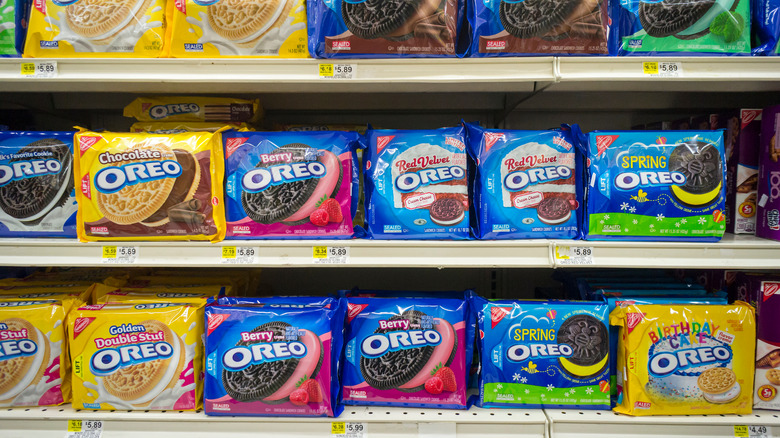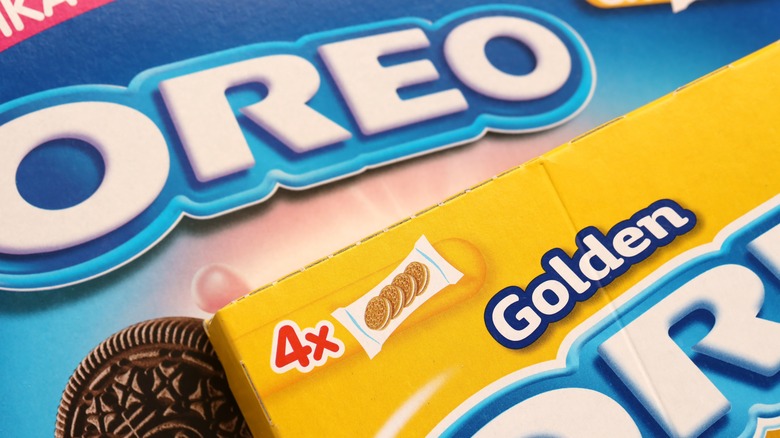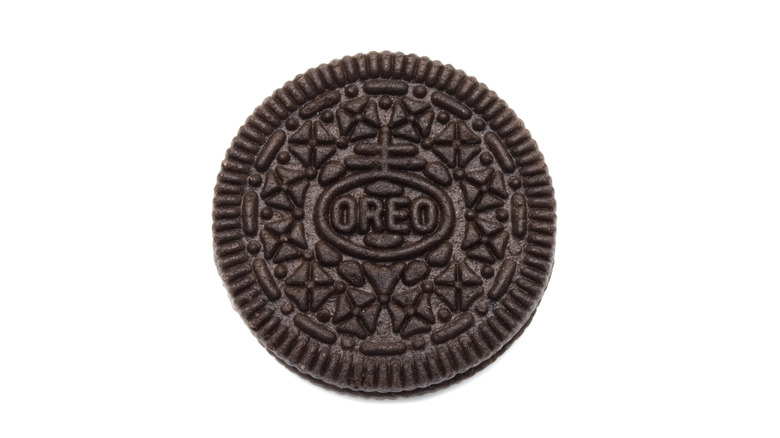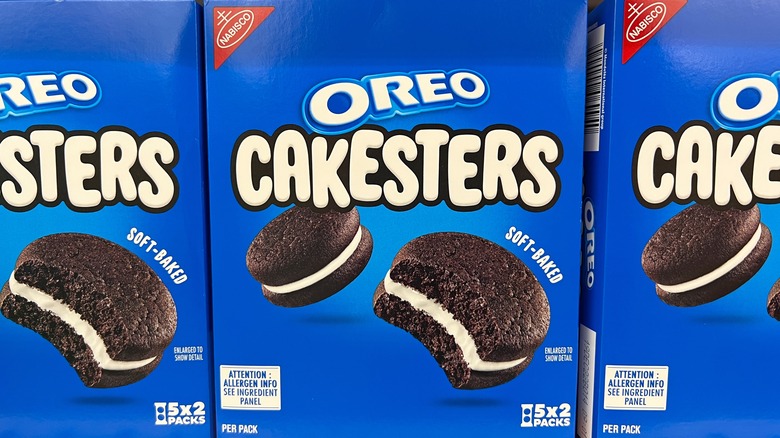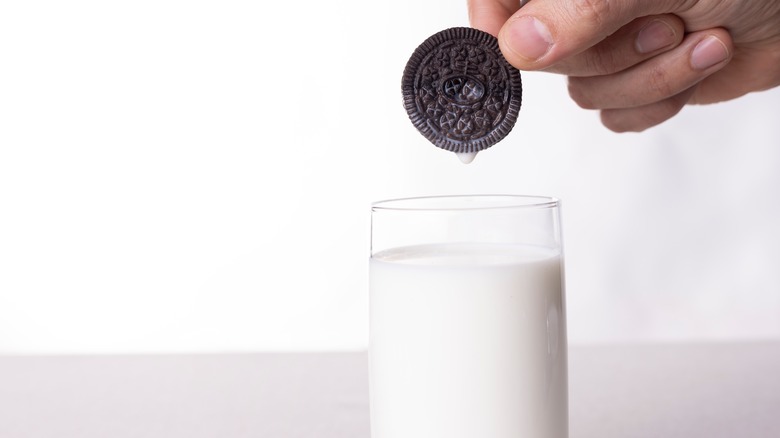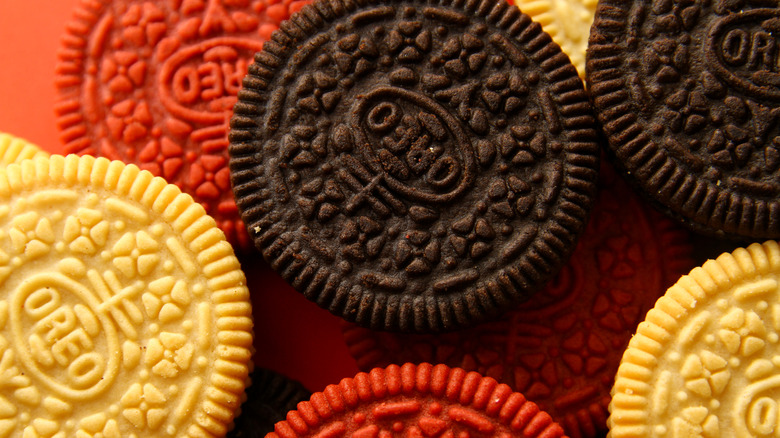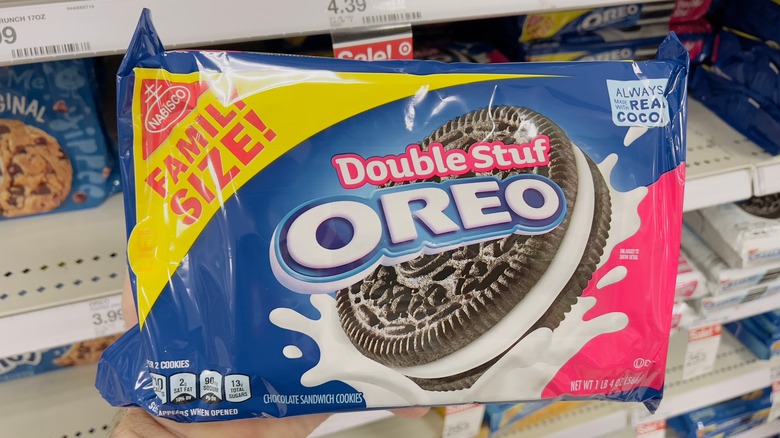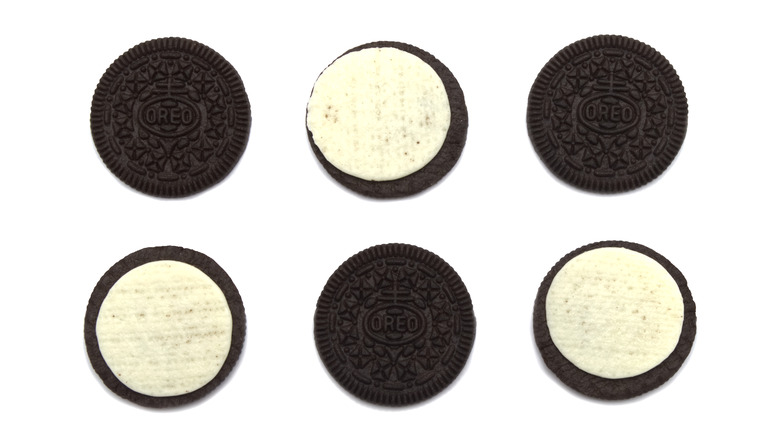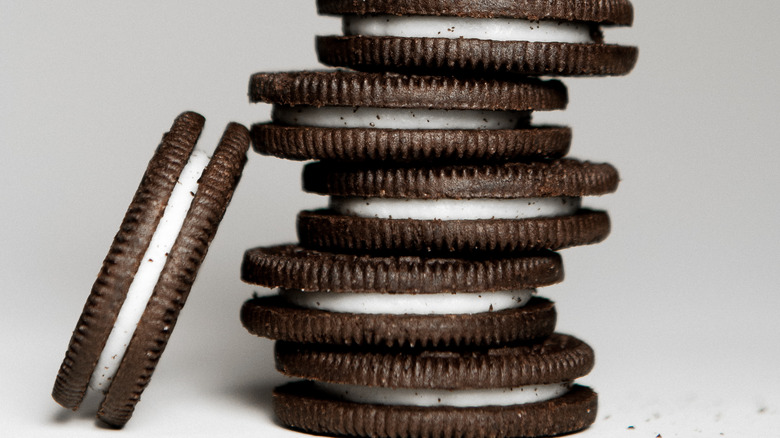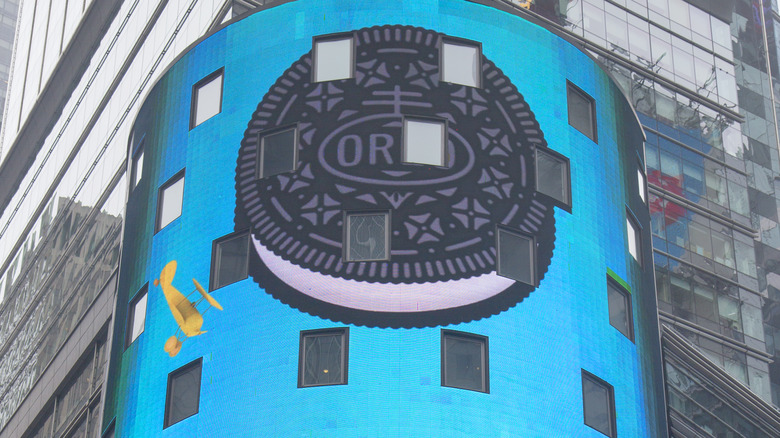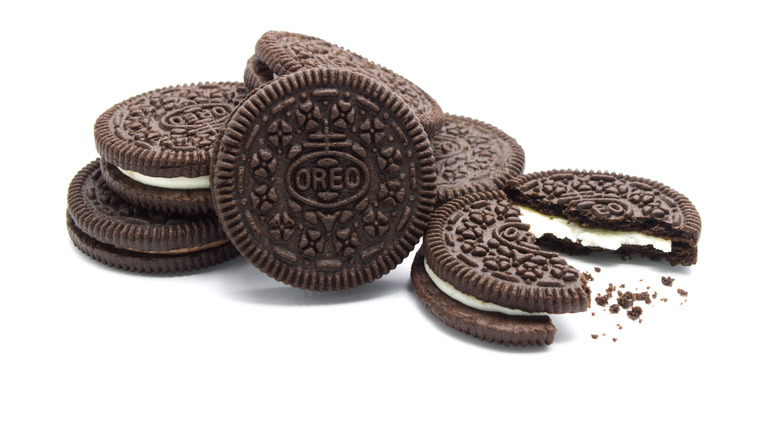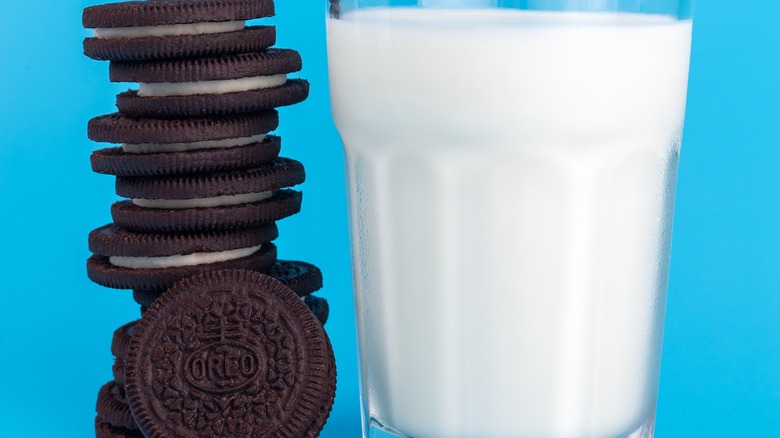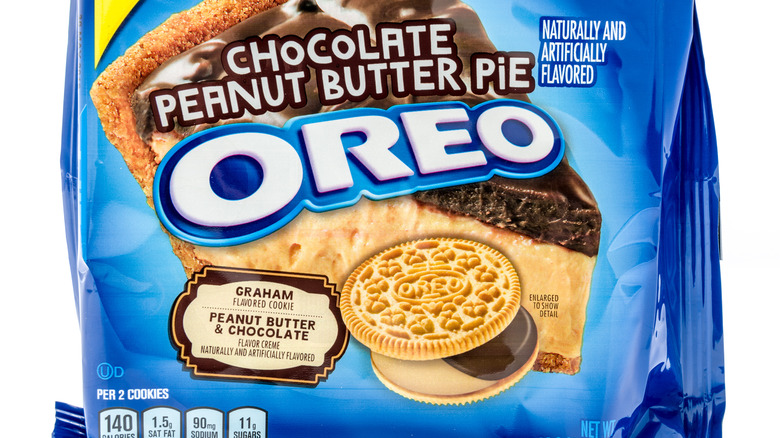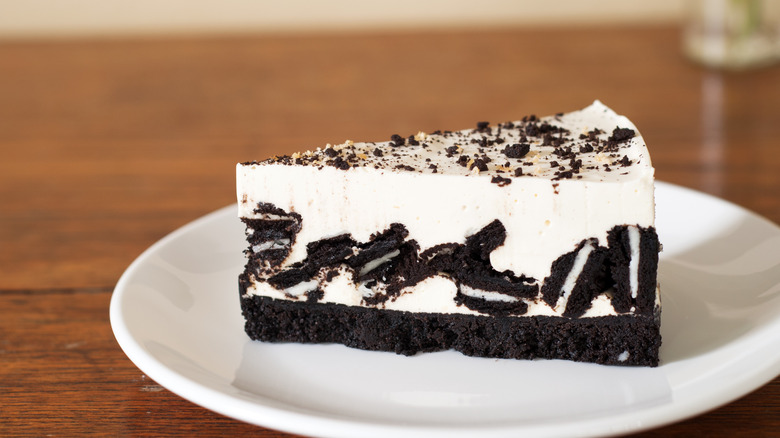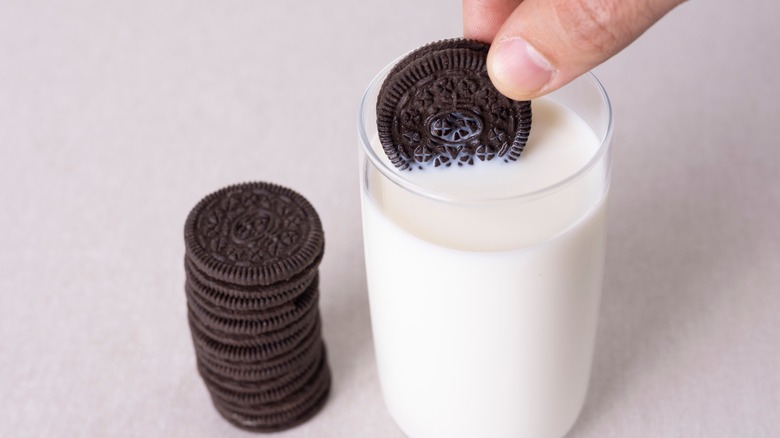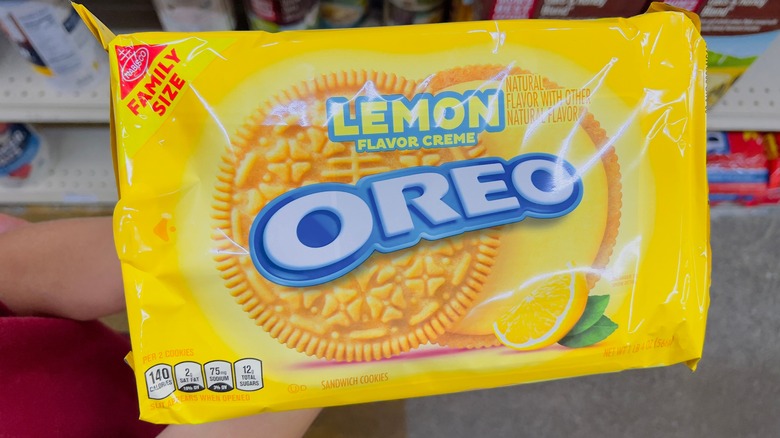Everything You Ever Wanted To Know About Oreo
Oreo is a cookie brand that needs no introduction.
The brand's success is motivated by the quality of the products and the use of very clever marketing techniques. Oreos are much more than a cookie; they are a part of popular culture, so it's natural for the public to react to new varieties and expect the brand to be present in social media and everyday life. Over time, there have been countless Oreo varieties connected to seasonal events, such as Halloween, and others derived from local flavors, such as the Chinese wasabi Oreo or the Indonesian coconut delight, while other Oreos promoted bands or franchises, such as Oreo Blackpink or Oreo Batman. The sheer number of varieties, the brand's tendency to play with flavors, and the public's enthusiastic response prove that Oreo is now far beyond a mere cookie; it is a global phenomenon. Here are some interesting facts about the brand, its history, and the cookie flavors we all know and love.
The origin of the name is a mystery
The Oreo cookie is a classic American treat loved by millions, but have you ever wondered about the name's origin? There's some mystery surrounding the Oreo name and its meaning, and several theories trying to explain it have popped up. One theory is that the name comes from the French word "or," meaning gold, which is the color of the original Oreo packaging. Another theory is that the name was inspired by the Greek word "oreo," which means beautiful, nice, or well done.
However, the most widely accepted theory is that the name "Oreo" was invented by the Nabisco company, which introduced the cookie in 1912. On the other hand, some believe it was simply a made-up name that sounded catchy and easy to remember. Undoubtedly, the name stuck with the public and was well chosen. Nevertheless, regardless of its origins, the Oreo cookie has become a beloved staple in American culture.
The cookie design has remained the same since 1952
The Oreo cookie is an iconic brand with a classic design. It's been around for over a century, and its design has become a representative feature of the brand. The design was introduced in 1952 by William Adelbert Turnier, an employee from Nabisco's engineering department. He is credited with creating the most representative cookie design, replacing the initial, simpler version. The initial Oreo design featured a simple flowery shape that seemed crude by comparison.
Turnier's design is very complex, with a ring that encircles 12 four-leaf clovers connected by 90 radial lines. Although there is no official interpretation of the design's meaning, it inspired many theories, from Masonic influences to numerology symbolism. However, none of these were proven. Furthermore, Turnier never discussed the meaning of what was to become the image of the Oreo brand. So, no matter what Oreo's design represents, it is certainly recognizable. You can't see it and not think of a glass of milk and some Oreos.
Oreo Cakesters made a spectacular comeback after over 10 years
Oreo Cakesters were a popular snack launched in 2007, but have since disappeared from store shelves. However, the public adopted them quickly, thanks to their unique combination of cookie and cream flavors, their convenience, and portability. Although a hit with consumers, the product was discontinued in 2013, with no explanation from the company. The decision to discontinue Cakesters could have had something to do with the fact that, at that time, Kraft Foods was dividing into two companies, and the corporate policy was changing.
However, in 2022, the company announced that the Oreo Cakesters would return. Like the original cookies, the new version is a soft, cake-like cookie with a creamy filling similar to the center of an Oreo cookie. The ingredient list in the current Cakester version is also very similar to the original version, so there is little difference in texture and taste. It's to get your hands on some Cakesters nowadays, and it seems like they are here to stay.
Oreo producers are marketing masters
Oreo, the iconic chocolate cookie brand, has been at the forefront of innovative marketing strategies. Over time, the brand has launched playful marketing strategies to remain relevant in pop culture. This included creating a limited edition cookie inspired by Stranger Things, launching four different Game of Thrones-inspired products, and partnering with influencers and celebrities. The brand also uses social media to its advantage by running campaigns and engaging with customers.
Combining these tactics helped Oreo create an emotional connection with its target audience. It also allowed them to drive more traffic to the website, which generated more sales for the company. Moreover, engaging with different aspects of pop culture allowed Oreo to stay relevant and keep up with ever-changing consumer trends. As a result, Oreo's creative approach has paid off immensely, as the brand is now seen as a fun-loving trendsetter rather than just another biscuit producer. The public is used to Oreo's playfulness; more importantly, consumers have come to expect this attitude.
Science says you should dunk Oreos in milk for precisely three seconds
Have you ever wondered about the perfect length of time to dunk an Oreo cookie in milk? Well, according to one study, the optimal amount of time for an Oreo cookie to be submerged in milk is three seconds. A team of scientists from Splash Lab conducted this research. The team tested regular milk with Oreo, Chips Ahoy, Nutter Butter, and Graham crackers.
The study found that Oreos absorb about 50% of the potential milk weight in one second, 80% after two seconds, and stop for the third second. After the fourth second, Oreos stop absorbing liquid altogether. Thus, the ideal length for a milk dunk is three seconds. However, remember that the experiment was performed with regular milk, so the results change when you use plant-based milk. It also depends on how you like your cookies. One second of dunking in milk is enough if you prefer your Oreos crunchy.
Oreo showcased over 100 flavor varieties worldwide
Internet searches reveal that many people have wondered how many Oreo varieties were available over time. Considering that Oreos can be bought in so many counties and have been around for over a century, it shouldn't be a surprise that different rankings have found that there have been well over 100 Oreo flavors. So, are there any differences between what's available in the U.S. and overseas?
It turns out that there are several differences. In China, Oreo offers green tea ice-cream flavored Oreos, a cookie that resembles ice cream's taste and cooling sensation. Another famous Chinese Oreo is the peach and grape flavor. In Argentina, Oreo comes with a banana or dulce de leche flavor. At the same time, the Indonesian chocolate and strawberry flavor also sounds good. Finally, Mexico has an appealing Oreo variety, the trio chocolate cookie. However, the brand's biggest seller remains the classic black-and-white Oreo.
Double-stuffed Oreos aren't exactly what they say
Double-stuffed Oreos are a classic favorite, but you may have wondered if they really contain double the amount of crème filling compared to regular Oreos. In 2013, a math teacher in New York, Dan Anderson, designed an experiment to test the amount of cream in double-stuffed Oreos. His class found that the double-stuffed cookies actually contained 1.86 times more crème filling than regular Oreos. The results were different from what people expected; however, it is still true that double-stuffed Oreos have more crème filling than traditional Oreos.
Indeed, 1.86 is not exactly double, but still, there is much more filling in these Oreos than in the other varieties. It's also true that, when enjoying a cookie with milk, you shouldn't think about numbers, but instead focus on the crunch, the softness, and the sweet taste. So go ahead and savor those double-stuffed Oreos, regardless if they have the exact double-filling amount you expected.
Food scientist Sam J. Porcello was nicknamed Mr. Oreo
Sam J. Porcello, also known as Mr. Oreo, was a food scientist and inventor who worked for Nabisco for over three decades. He is credited with developing the modern formula for the Oreo cookie, now one of the world's most famous and beloved cookie brands.
Porcello joined Nabisco in 1956 as a scientist and worked his way up to become the company's principal food scientist in the early 1980s. During his tenure, he worked on various products, including SnackWells, but his work on the Oreo made him famous. Porcello's most significant contribution to the Oreo was helping develop the filling that is now used in the cookie. He experimented with various fillings, including lemon, lime, and orange, before settling on the creamy white filling we all know and love. Overall, Porcello owned five Oreo-related food patents, making him one of the most qualified food scientists to have worked on the cookies.
Oreos were inspired by another brand of sandwich cookies
The beloved Oreo cookie, a staple in American snack culture, was inspired by its predecessor, the Hydrox cookie. Hydrox cookies were first introduced in 1908 by the Sunshine Biscuit Company. They were the original sandwich cookie with a creme filling. However, in 1912, the National Biscuit Company (now known as Nabisco) introduced its own version of the sandwich cookie, the Oreo.
While the two cookies may look similar, there are some notable differences. Hydrox cookies have a more delicate, crispy texture, whereas Oreos have a sweeter taste and a creamier filling. Hydrox cookies also have a floral imprint on their biscuit, while Oreos have a more generic geometric pattern. Despite being the original, Hydrox cookies were overshadowed by the immense popularity of Oreos. As a result, many people began to refer to Hydrox cookies as "imitation Oreos," and the brand struggled to keep up with Nabisco's marketing efforts. In 2003, Hydrox cookies were discontinued due to declining sales. However, in 2015, a group of investors purchased the Hydrox trademark and brought the cookie back on the market.
There is a street in New York named in honor of the Oreo cookie
The iconic sandwich cookie Oreo has a special connection to New York City, where the first Oreo factory appeared in 1912. In honor of this beloved treat, there is a street in New York City named after it, Oreo Way. Located in the Chelsea neighborhood of Manhattan, Oreo Way officially received its name in 2018 to celebrate the cookie's 106th birthday. The street is just one block long, stretching from Ninth Avenue to Tenth Avenue between West 15th and West 16th.
Oreo Way is not just a clever name; the street is also home to a massive billboard featuring a giant Oreo cookie. The 40 feet tall and 25 feet wide billboard was installed in 2016 and has since become a popular spot for selfies and Instagram posts. With Oreo Way, the iconic cookie, which has become a worldwide symbol, has been immortalized in the heart of New York City.
Oreos are not entirely vegan
Oreos are a popular snack that many people assume to be vegan because they are made without any obvious animal products like lard or dairy. However, upon closer examination, it turns out that Oreos are not entirely vegan.
One issue regarding Oreos being entirely vegan is the processing factory, which uses milk for other products. As such, although Oreo filling does not contain milk, it may have traces of it. Another vegan concern in some Oreo varieties is the use of honey. Only a few types of Oreos use this animal product, but they are certainly not vegan. Lastly, there is the problem of artificial flavors, which are often not disclosed in detail. While most of these flavors are likely plant-based, some may be derived from animal sources, making it difficult to know whether Oreos are vegan. Therefore, those who follow a strict vegan diet may want to research before choosing an Oreo variety, as only certain cookie varieties suit this diet.
The world's biggest Oreo weighed almost 162 pounds
If a single Oreo is great, how could a giant Oreo be? The world's largest Oreo cookie is a record-breaking 73.4 kilograms (almost 162 pounds) cookie, notes the Guinness Book of World Records. Mondelēz Bahrain Biscuits W.L.L. created it to celebrate the latest Mondelēz factory opening in the Middle East. The cookie was 6,495 times bigger than a regular Oreo, which weighs 11.3 grams.
The giant cookie was made with Oreo dough and cream, which you would find in a regular cookie. A Guinness World Records adjudicator performed all the measurements and ensured the guidelines were met to register the cookie as a world record. After preparing the cookie and having it registered as a world record, the employees at the factory enjoyed it, along with another 150 people at a social gathering in a nearby village. Without a doubt, the giant cookie looked mouthwatering, with its chocolate-filled biscuits and the very generous amount of cream. We're also sure that it was delicious.
The chocolate peanut butter pie flavor reigns supreme
Taste preferences are a very personal choice, without a doubt. Nevertheless, it's possible to rank even something as unanimously appreciated as Oreo flavors, considering general criteria such as sweetness, flavor intensity, cookie texture, and filling texture. And although there are numerous spectacular Oreo varieties, and it's hard to choose a favorite, this Oreo flavor ranking highlights some excellent varieties. Among these are the fudge-covered classic Oreo, the fudge covered with mint-flavored crème, the mint-flavored crème, and the double stuffed.
But the best Oreo variety to us is the chocolate peanut butter pie. It combines two classic flavors that many love: chocolate and peanut butter. The creamy, nutty taste of the peanut butter filling complements the rich, chocolatey taste of the double cream. The combination creates a delicious mix of flavors that is hard to resist. The graham cracker cookies surrounding the filling are also a great choice, as they are not as overpowering as chocolate cookies. The overall taste and flavor profile of the Chocolate Peanut Butter Pie Oreo is well balanced. The cookie's sweetness is not overpowering, and the peanut butter filling is not too salty or oily. It makes it a great treat for anyone with a sweet tooth who wants to indulge in a tasty snack.
Oreo has inspired countless desserts
Oreo cookies can be enjoyed in many ways, from desserts to snacks. Whether you are looking for an easy dessert or something special, there's an Oreo-based recipe for everyone. From Oreo cheesecake and brownies to ice cream, you can add delicious cookies to many desserts and improve them.
A classic Oreo dessert example is cheesecake. It is a no-bake dessert that requires a few ingredients: cream cheese, whipped cream, sugar, vanilla extract, and crushed Oreos. The crunchy texture of the cookies combined with the creamy texture of the cheesecake makes this a must-try in our book. Another great Oreo recipe combines the cookies with ice cream, pairing two contrasting textures. The recipe is super easy to make, as you only need to layer the Oreo cookies, the ice cream (you can use any flavor that you desire, like mint chocolate chip), and the whipped topping.
According to physics, there is a right way to eat an Oreo
The debate concerning the right way to eat an Oreo (twist it or break it) poses some fascinating physics questions, not to mention polarizing the audience. When it comes to eating an Oreo, there are several factors that physics would consider. One of the key principles of physics is the conservation of energy, which states that energy cannot be created or destroyed, only transferred or transformed.
In the case of an Oreo, the potential energy stored in the cookie and cream filling must be transferred to the eater's body. It requires the application of force to break the cookie and separate it from the filling. According to a physics study from MIT, it is more efficient to twist the cookie apart rather than pulling it straight off, as this reduces the amount of force required. Another factor to consider is friction, the force opposing motion between two surfaces in contact. It plays a role in how the Oreo interacts with the eater's mouth, so the best choice is to take small bites after twisting the cookie.
The first non-chocolate Oreo wasn't very popular
Oreo launched the classic chocolate cookie in 1912 to widespread acclaim and quickly became America's favorite chocolate cookie. Then, in the 1920s, Oreo launched its first non-chocolate flavor, the Oreo lemon crème. Despite being marketed as a refreshing and zesty alternative to the classic chocolate cookie, the new flavor was met with underwhelming reception and failed to capture Oreo fans' hearts and taste buds.
There were several reasons why the Oreo lemon cookies failed to gain popularity. First, they were quickly discontinued, and the best-selling Oreo variety remained the classic chocolate flavor for a long time. But in mid-2010, an explosion of novelty Oreos, such as fruit punch, root beer flavor, and Swedish fish, didn't slow down the company's sales records, but actually increased them. And, amid all those novelty varieties, the company brought back the lemon creme cookies, which became one of the many Oreo types now available. Luckily, they are here to stay.
